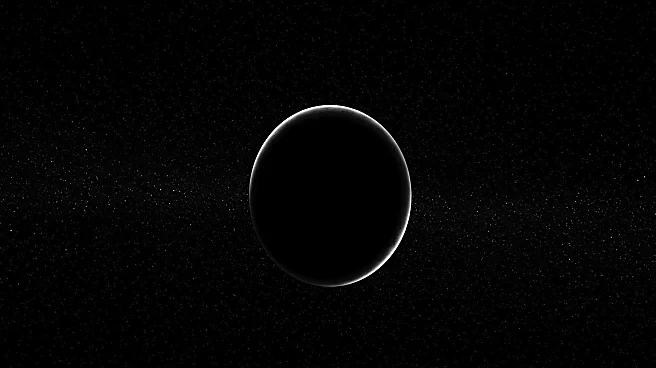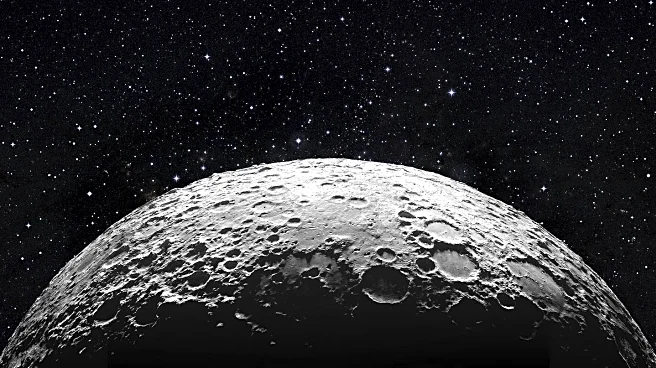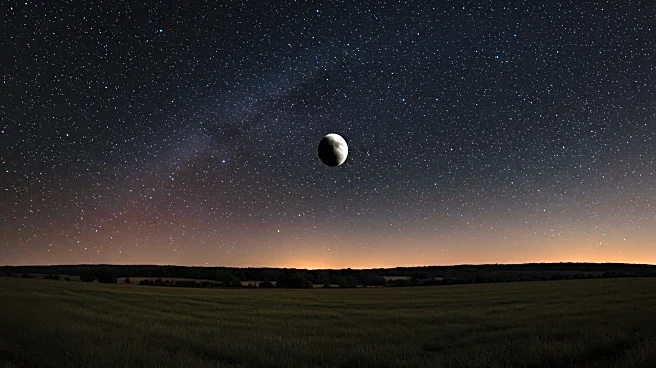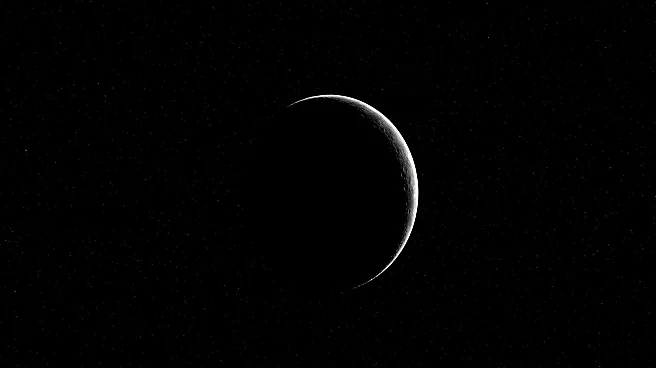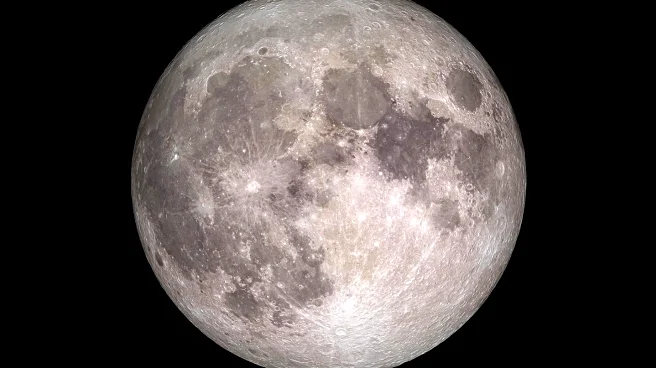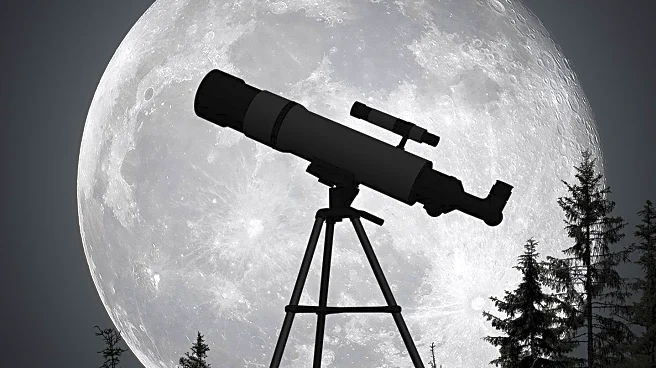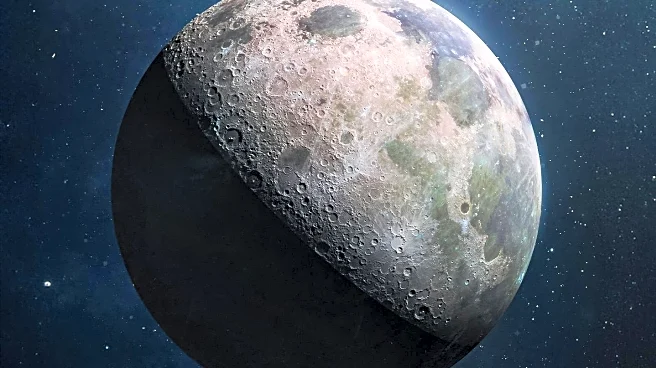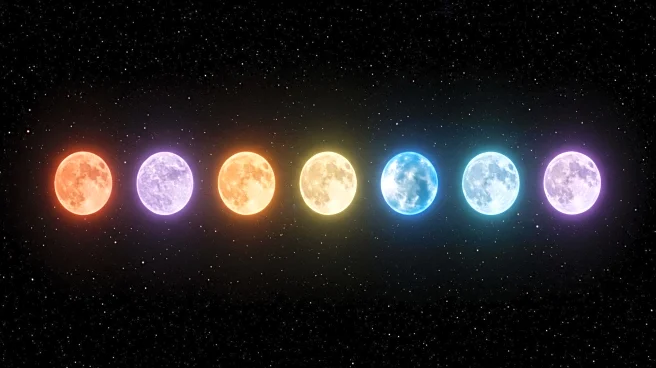What is the story about?
What's Happening?
The 'black moon,' a rare lunar event, is set to occur this weekend, marking the third new moon of the summer season. This phenomenon, which will be invisible to the naked eye, happens when the moon is nearly between Earth and the sun, with its illuminated side facing away from Earth. The term 'black moon' is unofficial and refers to either a second new moon in a month or the third of four new moons in a season. The event coincides with the upcoming autumnal equinox, when the sun moves directly over the equator.
Why It's Important?
The 'black moon' provides an excellent opportunity for stargazing, as the absence of moonlight enhances the visibility of stars and celestial objects. Observers can take advantage of the moonless night to view the Dumbbell Nebula and other astronomical features. This event underscores the importance of understanding lunar cycles and their impact on night sky observations. The phenomenon also highlights the gravitational relationship between Earth and the moon, offering insights into celestial mechanics.
What's Next?
Astronomers and enthusiasts are advised to use telescopes to observe celestial objects during the 'black moon.' The next occurrence of a 'black moon' is predicted for August 31, 2027, when a new moon will appear twice in one month. This cycle emphasizes the need for continued study of lunar phases and their effects on astronomical events. As the 'black moon' unfolds, it will contribute to ongoing research and public interest in lunar phenomena.
AI Generated Content
Do you find this article useful?
